
Rich with history, Ishikawa Prefecture’s Kanazawa (金沢) has a story to tell around every corner. From historic geisha districts and Edo Period architecture to traditional handicrafts and a world‑class fish market; it’s one of the best places to experience Japan’s diverse and unique culture. Only a two hour Shinkansen ride from Tokyo, Kanazawa and Noto Peninsula come highly recommended as something a little different for your next Japan itinerary. Come with me as I share my top 12 locations and experiences, as well as some tips, tricks and local highlights to help you along your way.
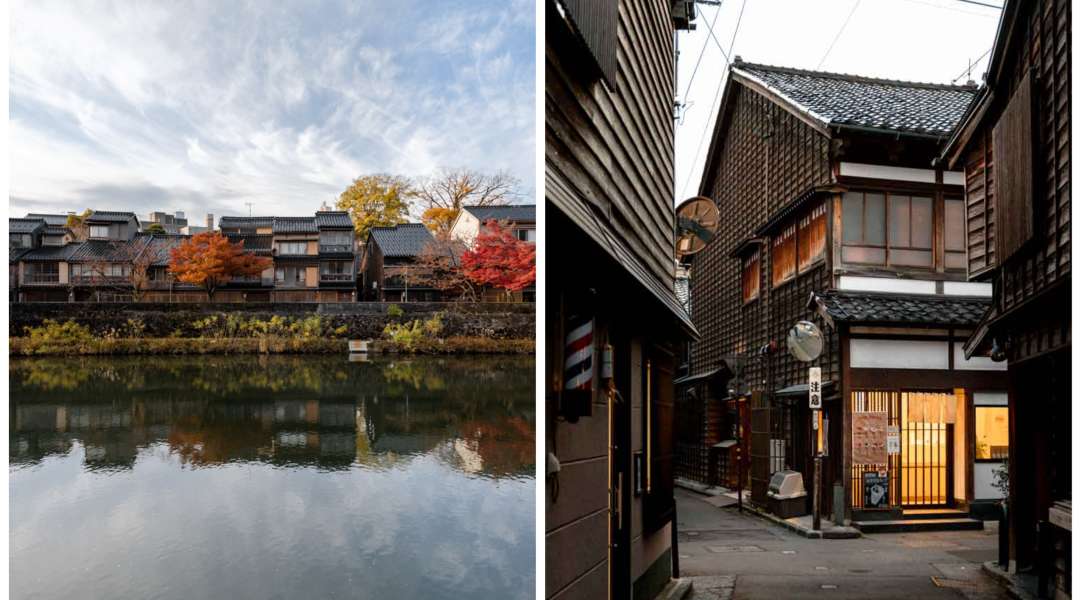
1. Explore Edo Period Architecture in the Historic Higashi Chaya District
Translating to ‘Eastern Teahouse District’, Higashi Chaya is one of three small geisha districts in Kanazawa. Machiya*‑lined streets and Edo Period teahouses make up this beautifully preserved area that was first established in 1820 as an entertainment district for rich merchants and nobility. The daytime sees kimono‑clad tourists stroll the streets with shopping bags full of gold leaf and the evenings bring a soft warm glow from each building, providing an other‑worldy atmosphere as you navigate your way through the small side streets and alleyways.
*Machiya are traditional wooden townhouses

2. Feast Your Eyes on Kanazawa’s Iconic Gold Leaf Creations
Kanazawa is famous for many crafts, with gold leaf being the most treasured. Over 99% of Japan’s gold leaf production happens in Kanazawa, mostly by local artisans. Their handiwork can be seen all over Japan at temples, and on furniture and lacquerware. The gold sheets are so thin, they will disappear when you rub them with your fingers. Nothing goes to waste, and off-cuts are used in the food industry for gold leaf decoration on posh meals and ice creams – which can of course be sampled throughout the city.

3. Immerse Yourself in the Colours of Kenrokuen Garden
Known as 'The Garden of Six Sublimities', Kenrokuen used to form part of the original Kanazawa Castle, and is also one of Japan’s top three gardens. Across the garden there are six different areas, each created to feature trees and plants specific to the four seasons. I was lucky to be there for autumn and experience an explosion of colour and some crisp morning reflections across the ponds.

4. Step Back in Time at the Nagamachi Samurai District
Moving on from Kenrokuen, Nagamachi (長町) Samurai District is a 10‑minute walk across the city and is home to narrow alleys and cobbled streets that used to be home to samurai residents and their families. The best preserved example of the area’s historic culture is the Nomura Clan Samurai Residence, where guests can explore the full home, its artifacts and a private tea room.

5. Discover Seafood Delicacies at Omicho Market
Nicknamed ‘Kanazawa’s Kitchen’, Omicho Market has been Kanazawa’s largest fresh food market ever since the Edo Period. A short walk from all of the main attractions, this is where you can sample some of Ishikawa’s famed sashimi and sushi delicacies, as well as over 200 stalls and restaurants selling seafood, rice bowls and kitchenware. The market gets busy around lunchtime and be sure to arrive early to beat the midday rush.
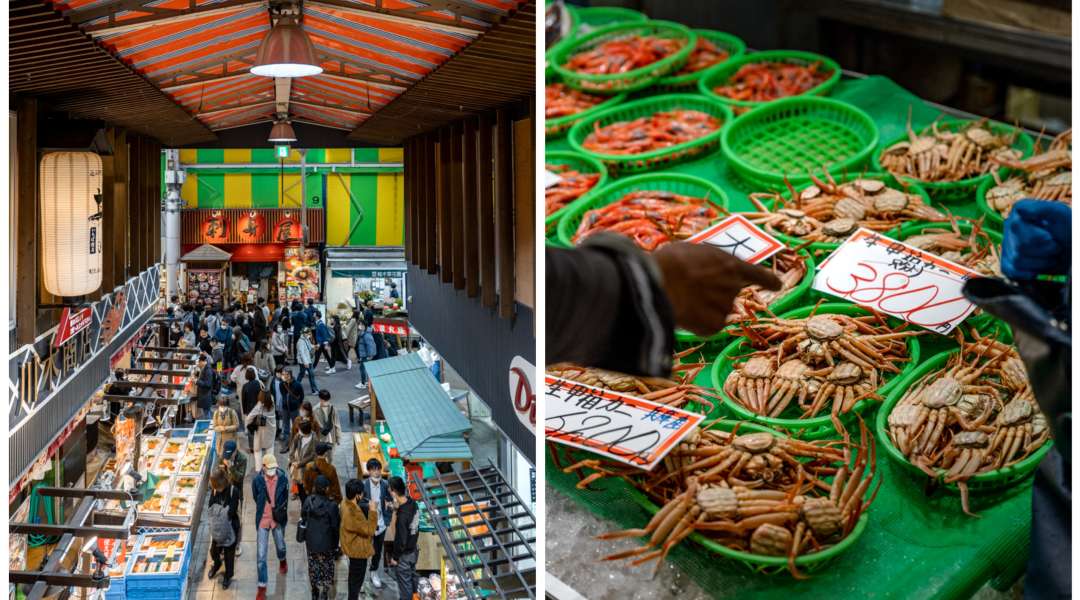
6. Experience True Omotenashi at a Geiko Teahouse
Geiko (芸子) are the epitome of Japanese hospitality; they dedicate their lives to mastering traditional Japanese arts and train for over 10 years, striving to become the perfect entertainers in an art form that is often misunderstood. Kanazawa is home to only five remaining private geiko (or ‘geisha’) teahouses and limited numbers of guests can enjoy an evening being entertained by these supremely skilled artisans. Teahouses have strict ‘ichigensan okotowari’ policies meaning ‘no entry without introduction’, so be sure to plan ahead to not miss this experience.
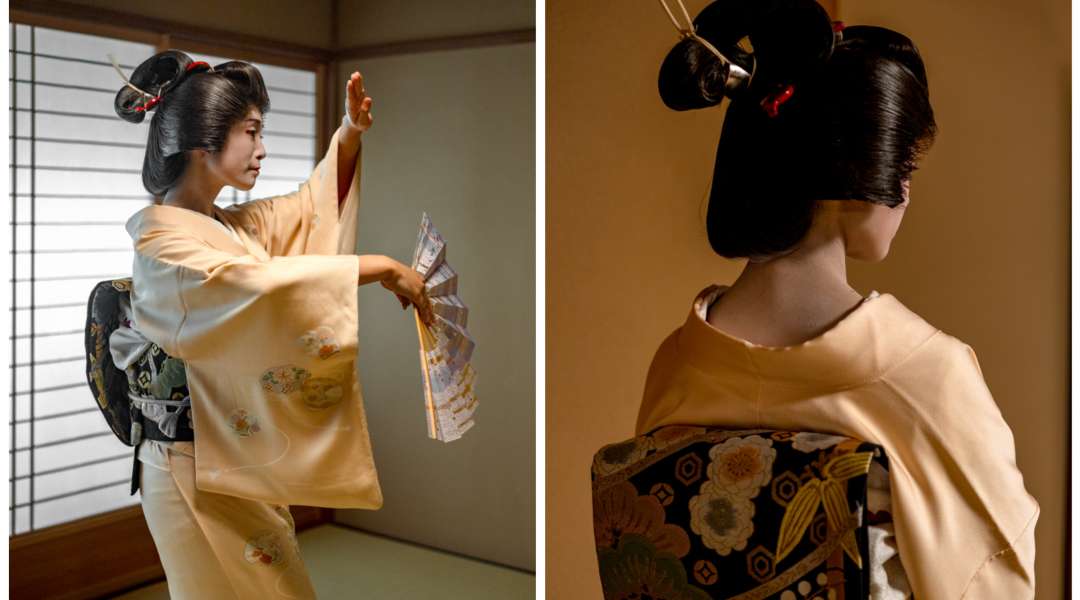
7. Learn the Art of the Samurai Sword
Kanazawa has strong roots in Japan’s samurai era, with a dedicated historic samurai district, as well as museums and restaurants dedicated to the ancient art. Those who want to take the samurai experience to the next level can enjoy a private samurai demonstration and class, to learn the sword-making process from start to finish and even place an order for their own custom built sword.
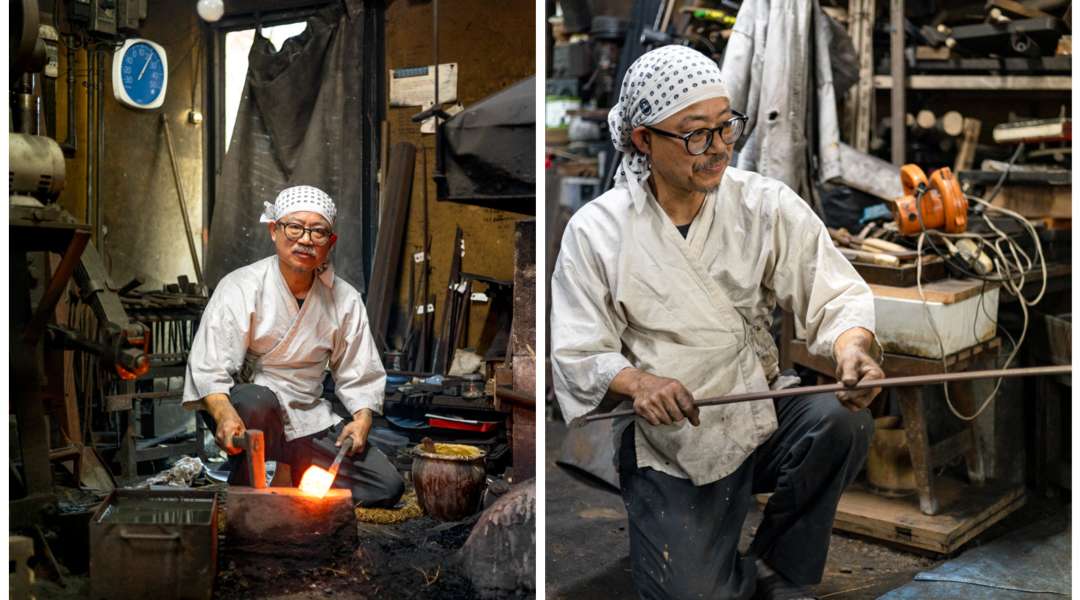
8. Brave the Rugged Landscapes of the Noto Peninsula
Home to rough seas, rugged coastlines and oceanside temples, Ishikawa’s Noto Peninsula is the ideal add‑on to your trip to Kanazawa. The peninsula itself extends around 100 km out of the top of the prefecture, and is best explored by car. Also along the outer coast are plenty of ryokans and onsen towns including Wajima and Wakura Onsen.
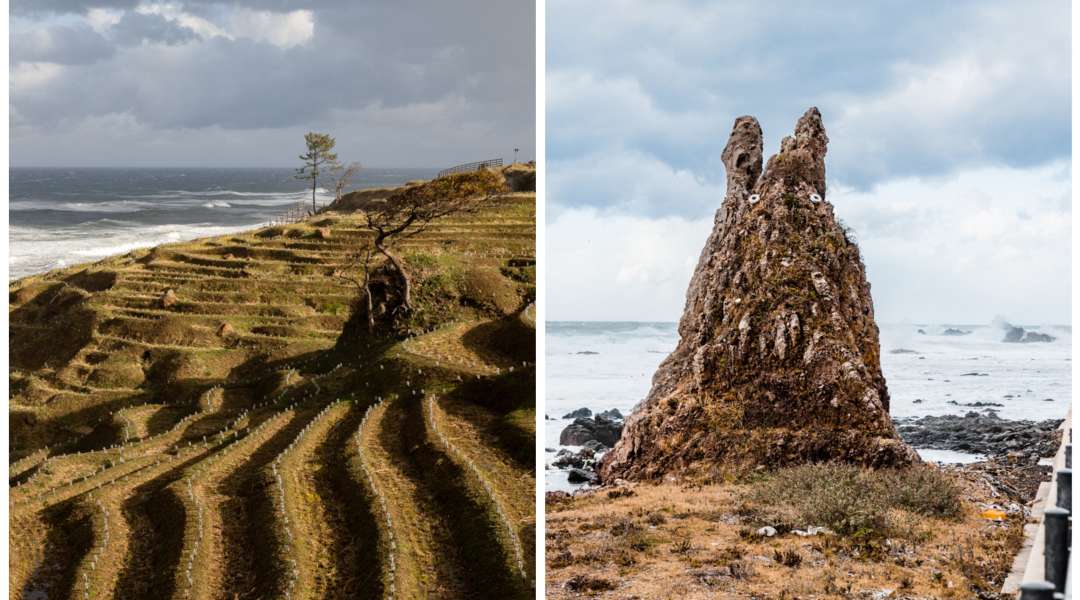
9. Relax with World Class Hospitality at Hyakurakuso Ryokan
Noto is known for having several world‑class ryokans located along its rocky coastlines, and one of those is Hyakurakuso. Located on the cliffside of the stunning Tsukumo Bay, the oceanfront ryokan comes equipped with its own private fishing dock. Guests can experience a mix of private onsens and multi‑course seafood menus, as well as learning all about the area’s history in the fishing trade from staff who have lived in Ishikawa their whole lives.
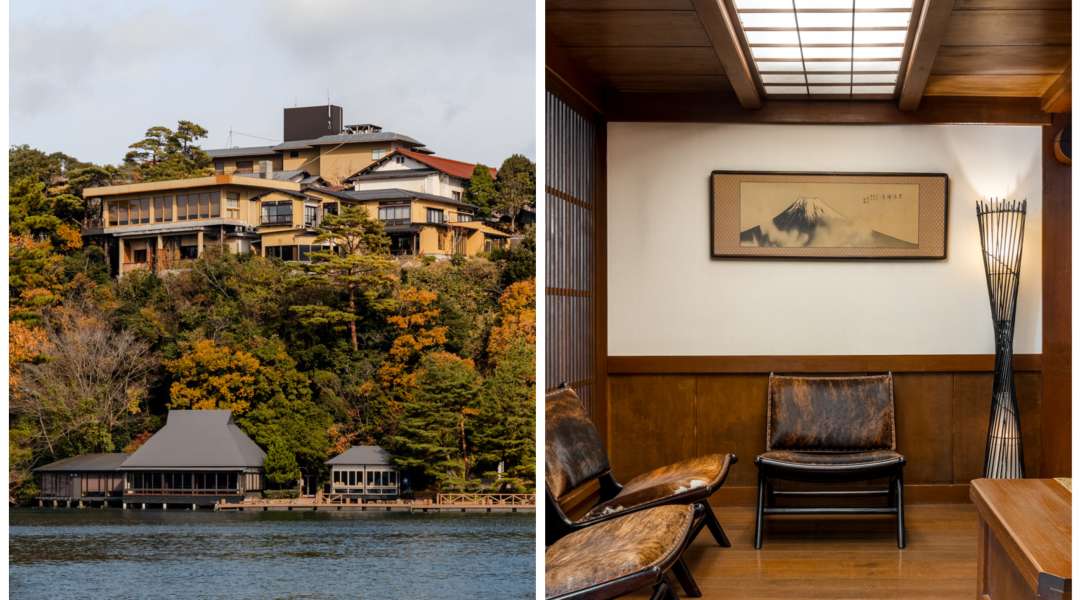
10. Marvel at the Ganmon Sea Cave
Meaning ‘gate rock’, Ganmon is a naturally formed sea cave overlooking the Sea of Japan, with daily boat rides and restaurants serving freshly prepared sashimi, sea crab and sushi. Even in bad weather, Gammon is a sight to behold, with the rugged ocean crashing down below. This is also a great starting point for a road trip around the top of the peninsula.
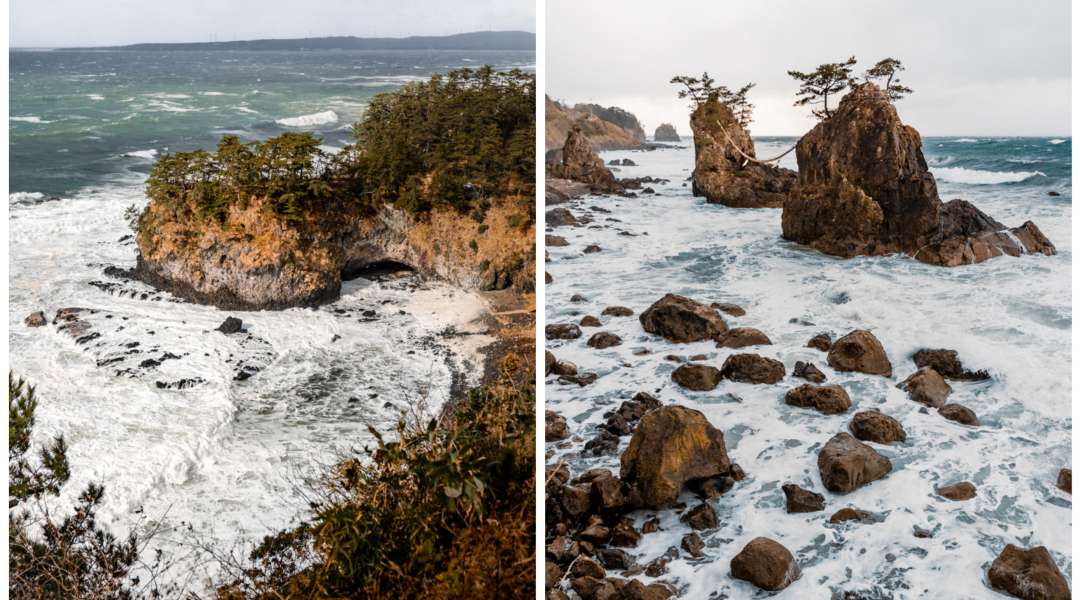
11. Make a Wish at the Hatago Iwa Married Rocks
Around three kilometres up from Ganmon are the sacred Hatago Iwa ‘Married Rocks’, connected together using a shinto‑style rope to mark the presence of sacred spirits. The shrine is easily accessed by car and has a quieter road to pull up on right at the foot of the ocean.
12. Take a Dip in Local Onsen Towns
Both unique in their own right, local towns of Wakura and Wajima Onsen are home to public onsens and countless ryokan hotels. The mineral-rich hot spring water is formed from the prefecture’s underground volcanic activity, and the bath houses are very popular with locals and a huge part of traditional Japanese culture. Take the time to relax in one of many indoor or outdoor baths and enjoy the natural surroundings of these oceanside destinations.
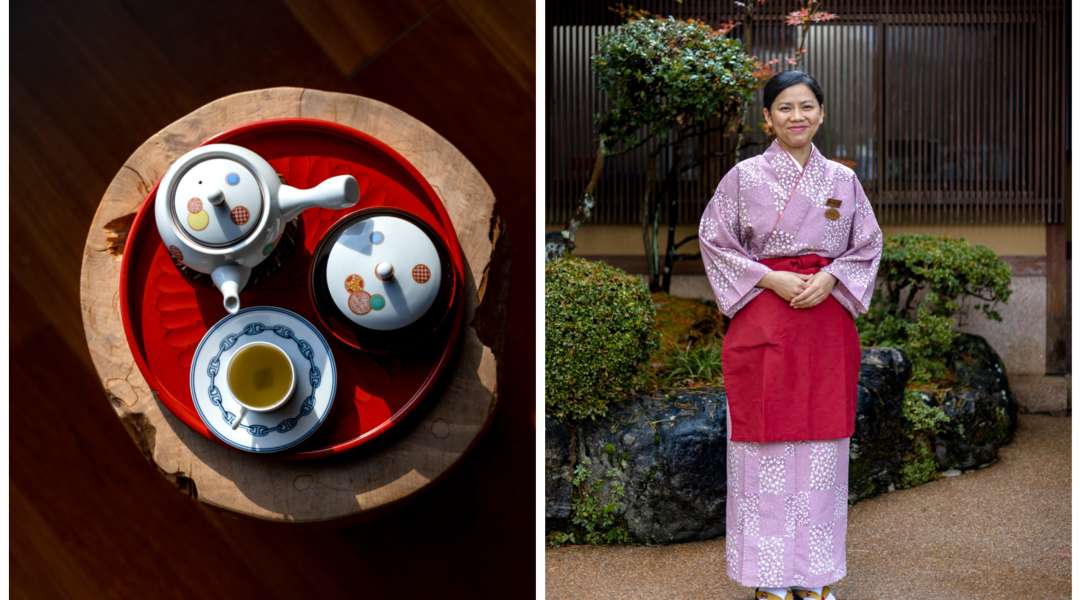
Tips and Tricks for a Visit to Kanazawa and Noto
1. Hire a car – Highly recommended to maximise your trip.
2. Pack a raincoat – Ishikawa’s proximity to the ocean can provide an ever-changing adventure with the weather.
3. Book in advance – Be sure to check available bookings for the crafts and culture experiences to avoid disappointment.
4. Save space for souvenirs – With plenty of shopping available in Kanazawa, you will want to take some gifts home with you.
5. Be prepared to wake up early – Early mornings can be some of the most serene times to explore Kanazawa, when the locals are rising and before the tourists have made their way into town.
Best Time to Visit
Kanazawa and Noto really can be enjoyed all year round. During winter, snowfall contrasts beautifully with traditional machiya-lined streets. Spring sees a flood of cherry blossom across the city’s parks and gardens. Outdoor performances and traditional festivals can be enjoyed through the summer months. And finally autumn has unrivalled foliage, adding a whole new dimension to any visit to Ishikawa’s capital.

Getting Around
The best way to arrive in Kanazawa is by Shinkansen, taking only 2.5 hours from Tokyo Station. When leaving the station be sure to leave via the south exit to see Kengo Kuma’s amazing wooden tori gate structure. From the station, the town is a short bus or taxi ride away and once in the city centre everything is easy walking distance. If you are looking to travel further into Ishikawa Prefecture, up into the Noto Peninsula, car rental is also recommended.
Ben Richards is a Tokyo-based travel and architectural photographer. You can check out his most recent projects on his Instagram here.


























































